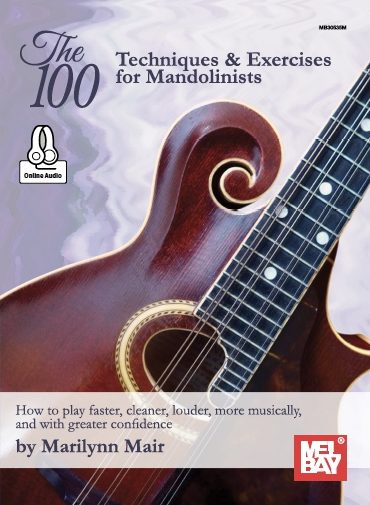This article first appeared in “Mandolin Magazine” Spring 2003.
Download a pdf of the sheet music associated with this article: Valse_Ranieri
Developing a tremolo you can truly enjoy is a slow process, and one too often rejected as impossible. So many mandolinists wince as their attempts strangle the melodic line in a double whammy of tense fingers and flabby pick. But a beautiful tremolo is a joy forever, and the pleasure is definitely within your reach. It just requires patience, and you too can experience the thrill of spinning an unbroken line through crescendos and decrescendos to touch down unscathed. And here’s the best news — once you’ve attained the right touch you get to keep that golden sound forever. Have I convinced you? Well, let’s get to work.
Contrary to what you might think, a flexible pick will not give you a good tremolo. No matter how you try, a light or medium weight pick will produce a thwacky sound and weak volume insufficient for tremolo nirvana. Nor is a good tremolo achieved by rounding off the point on your pick. Sure, that will keep the pick from getting caught in the strings, but it will also significantly limit your volume and range of expression and dull your sound. Sorry, but there’s really no shortcut for reaching a smooth rich tremolo sound. You need to develop a relaxed forearm control of your pick, and eliminate the tight-finger tight-wrist hold. It may take time, but you will find that the results are definitely worth the effort.
First, you need to buy a small heavy pick — Fender picks are good, Gibson’s are a bit on the light side, but OK. This pick is not the traditional guitar-sized number, it really is called a “small”. The pick should have a modicum of flexthe tiny inflexible jazz picks don’t work well either. And you need to be sure the pick has a good point. You might even want to file the pick down a bit to make it skinnier and pointier. Why? Well, the pick has to be heavy so it’s firm enough to set your strings in motion with enough force to move the body of your instrument to produce a good, warm “body” tone. But it has to be slightly flexible so the string can move the pick in your hand as the pick moves the string, giving you a smooth sound. It has to be small enough so you can have good control without hanging on too tight. And it has to have a point so you strike the string at a precise place to create a clear vibration pattern.
Hold your pick-less right hand in front of you with your thumb closest to your face. Slowly curl your all your fingers until the first joint of your index finger is running parallel to your thumb. Be sure that only the first joint, and not the middle joint is parallel, as that would produce too tight a fist. Take your small pick… (At this point I have to hold up the example of my teacher Hibbard Perry to all the guys who are saying, “aw, this must be a girl thing.” Mr. Perry had big hands, played with a tiny pick and had a tremolo that would melt butter. You’ve got beyond thinking your left hand is too big to deal with all those tiny frets, so believe that your right hand is the right size too. It’s actually easier if you’ve got a little weight behind the pick.)… and place it between your thumb and index finger, point facing away from your hand. Lower your hand to the mandolin so the pick is perpendicular to the strings. This is tremolo start-up position.
Try to hold your pick with just enough tension to keep it in place. Raise your hand by swiveling on the wrist joint and let the pick fall on the string. Repeat this slowly, only down strokes, until you feel in control. This may take a couple of days. Remember to let your hand fall with gravity, it’s drop-lift, not push-pull. When you feel you’ve got the hang of the down stroke, introduce the up stroke, but try not to add tension to your wrist. Play a slow continuous down-up (drop-lift) stroke until your pick seems to stay in place in your hand.
When you’ve reached this stage and can do an even, effortless down-up stroke, you can begin to work to increase your pick speed to tremolo range. I suggest this method: Set a metronome at about 54-60 and do quarter-note down strokes, mentally dividing them into groups of 4. Then begin a pattern of 4 beats of quarter notes; 4 beats of eighth notes using down-and-up strokes; 4 beats of 16th notes, and back to 4 beats of quarter notes. You return to quarter note down strokes each time to remove tension from your hand, to train yourself to take the relaxation of your quarter notes through to 16th, and eventually to 32nd notes, which is a good goal to set for your tremolo speed. Take all the time you need to get up to speed. The only requirement is that you keep your down-and-up strokes even and your hand relaxed. Your motor memory, and its natural tendency to speed things up, will take care of the rest.
This hand position works for single note picking as well, and allows you an increased range of expression and dynamics through variations in finger pressure on the pick and hand force of the stroke. It takes awhile to feel in control of your pick, but if you devote a few minutes each practice session to this exercise you’ll see a big improvement in your tremolo in the course of a year.




